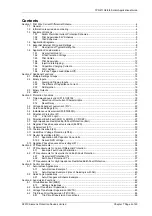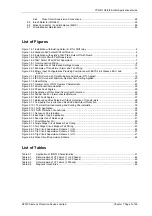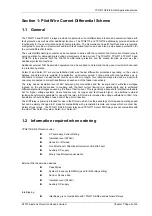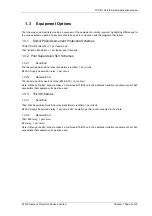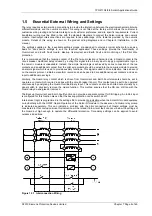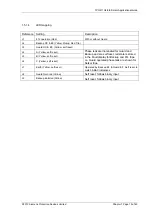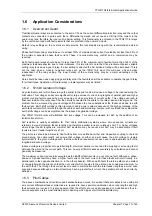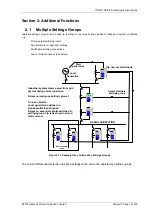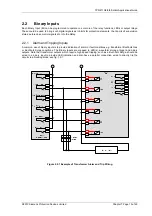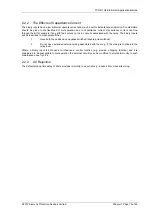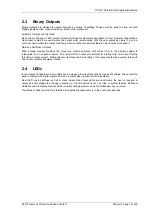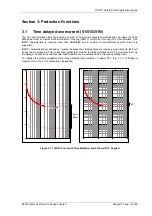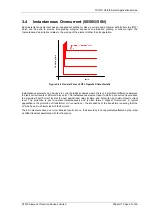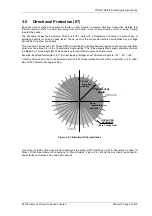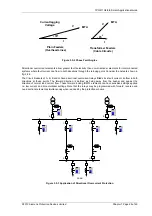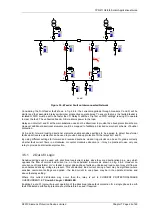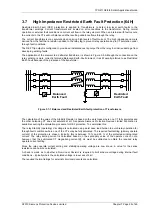
7PG2113/4/5/6 Solkor Applications Guide
Injection intertripping is used to force the remote end circuit breaker to trip for local protection operation. This is
generally started by protection other than the Solkor system since a differential protection system will generally
trip on differential current at both ends regardless of the local current level.
1.6.6 Capacitive Charging Currents
Significant electrical capacitance exists between HV primary conductors and the adjacent earth such that a
capacitive charging current will exist with any energised line. The level of current is dependent on the system
voltage, the feeder length and the construction including materials and proximity of earthed conductors. The
highest levels are found in separate phase, individually screened and armoured conductors with lowest levels
found on overhead line feeders. These currents are generally supplied from one end only as balanced 3 phase
and as such constitute a differential current to the relays but is usually significantly lower than relay 3P setting.
During out of zone earth faults however, the voltage on the faulted phase may be significantly depressed such
that the charging current is reduced. The Solkor summation transformer will measure charging current on two
phases only and interpret this as a residual differential current for which relay settings are significantly lower than
for 3P balanced differential current. This issue is compounded in systems which are not solidly earthed because
the unfaulted phase voltage may increase, leading to increased charging current on these phases, during an
earth fault. The transient switching of charging current limits the maximum charging current to 1/3 of the most
sensitive earth fault setting for solidly earthed systems or 1/9 of the most sensitive earth fault setting for
resistance earthed systems.
On higher voltage systems, where separate single phase cables are more commonly used and feeders are
generally longer it is common to find phase segregated Solkor Rf systems where 3 separate Solkor relays are
fitted at each end, each connected to a separate pairs of pilots with one phase of the system CT connected to
each relay. This avoids the problem of summation of charging currents.
1.6.7 N/N1 Setting
The N1 tap can be used to increase the relay sensitivity to earth faults by lowering settings for these faults without
affecting the phase fault settings. This may be particularly desirable for the 15kV scheme where all settings are
naturally raised by the increase in energy required to drive the additional isolation transformers. It must be noted
that the use of the N1 tap will increase the burden on the CT and therefore should only be used if the CT knee
point voltage Vk easily exceeds the minimum requirements stated below, which is often the case with modern
CTs. Prior to the introduction of cold rolled iron in CT design, the CT magnetising current effects could cancel out
any reduction in setting by increasing the excitation currents required at the higher level of relay burden. Care
should be taken when applying the N1 tap to older designs of CT with limited Vk.
The Primary in Zone Capacitance may also limit the use of the N1 tap as loss of charging current may lead to
mal-operation at the lower earth fault setting as described above
.
1.6.8 In-Zone Tapped Load (Bleed-Off)
The relay is able to tolerate a limited amount of tapped off balanced load within the zone of protection
based on the relatively insensitive level of fault setting for balanced 3P differential current. The typical
setting is 72% of rated current for 3P faults or differential load current. To allow for switching transients
of the tapped load a factor of 3 is advisable. The steady state feeder charging current and CT
inaccuracy will also erode the stability margin resulting in a maximum bleed off of 10-20% of rated
load current. Zero sequence infeed during out of zone earth faults from any transformer connected at
the tapping point must be less than the minimum earth fault sensitivity of the relay at the feeder end. If
a 20% tap off consists of a single large transformer, time lag relays may be
required between the Solkor
trip contact and the CB coil to improve stability by allowing for inrush conditions due transformer excitation.
If the feeder is teed at the substation, with an additional CT fitted to the tee-off, the two CTs should be connected
in parallel. To minimise excitation caused by transient spill current the CTs should be connected by the shortest
electrical path. Care should be taken in CT specification to ensure that CT mismatch or saturation is not
significant for the out of zone fault path where the fault current is not limited by the protected impedance. Fault
current passing in and out of the paralleled CTs will fail to cancel if the CTs are mismatched or if saturation occurs
to different extents. This current may be higher than the through fault level upon which the CTs are usually sized
.
©2010 Siemens Protection Devices Limited
Chapter 7 Page 13 of 49




